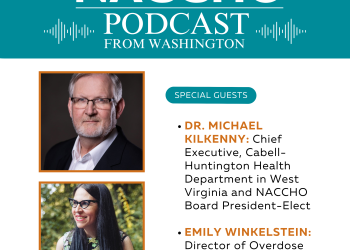Residents of multi-unit housing are at a greater risk of being exposed to secondhand smoke. El Paso County Public Health (EPCPH) is partnering with the Colorado Springs Housing Authority (CSHA) to implement a 100% smoke-free policy, with the objective of reducing secondhand smoke exposure and the harmful health effects of tobacco.
Secondhand smoke (SHS) poses serious health risks for all children and adults, such as lung cancer, heart disease, severe asthma, and Sudden Infant Death Syndrome.1 The Surgeon General has concluded there is no safe level of SHS exposure, and the only way to protect nonsmokers is by eliminating indoor smoking.1 Residents of multi-unit housing are particularly susceptible to SHS exposure in their homes due to smoke traveling through doorways, cracks in walls, and ventilation systems as well as drifting throughout common areas.2 In El Paso County, 47% of adults living in multi-unit housing have reported smoke drifting into their home.3 While the number of smoke-free multi-unit housing available in the United States has increased significantly in the last decade, not all Colorado Springs residents have the ability to choose where they live. Families with low socioeconomic status (SES) are often limited to public housing, where the smoking rates are nearly double that of the general population, at 33.6%, and where smoke-free policies are non-existent.4
The Department of Housing and Urban Development (HUD) announced a rule in February 2017 requiring all public housing to become smoke-free by July 30, 2018. The smoke-free policy will also include electronic smoking devices, and eliminate outdoor designated smoking areas. The first step of the implementation process was to communicate the policy to residents and staff at all CSHA properties. This communication began in the fall of 2017, approximately 10 months prior to the effective date, to allow adequate time for questions, clarification, and feedback from residents. EPCPH began attending resident meetings to talk about the smoke-free policy—including the importance of the policy, harms of secondhand smoke, and to provide tobacco cessation resources. EPCPH has provided technical assistance to CSHA by providing resources on industry best practices and developing a pre-assessment, which will be distributed to residents of the CSHA properties in the spring of 2018. This information will be analyzed and used to help further guide this initiative.
EPCPH was able to reach approximately 160 of the 471 residents living in multi-unit properties in the fall of 2017 through resident meetings. The overall response to the new policy was positive, as many residents communicated they had been exposed to secondhand smoke in their home. Current smokers expressed concern about having to leave their home to smoke. While residents are not being asked to quit, tobacco cessation materials were provided to all residents in response to this concern. Presenters communicated that the smoke-free policy is not an attack on smokers, but an effort to protect everyone from secondhand smoke. EPCPH and CSHA are hoping that the pre-assessment will be able to identify more attitudes and opinions about the smoke-free policy.
The required HUD ruling was the key component of this initiative. Although adopting a 100% smoke-free policy portfolio-wide had been a long time goal for the CSHA, the federal ruling provided a unique opportunity to reduce negative feedback from residents and staff and create a more positive experience. The ruling also provided a specific timeline and clear policy requirements. Communication with residents and staff has also been an important part of the process. Posters and signage were hung right away to notify residents of the upcoming policy. EPCPH began presenting at resident meetings to inform residents and answer questions. The policy is being promoted in a very positive, caring manner that has been well-received by the majority of residents. Perhaps the most powerful message to residents has been that the smoke-free policy is not about the smokers themselves, but rather it’s about the dangers of secondhand smoke. As a result, residents have provided informal feedback that they do not feel attacked, shamed, or pressured to move from their residence. Sources: 1. https://www.ncbi.nlm.nih.gov/b... 2. http://www.lung.org/assets/doc... 3. http://www.colorado.gov/pacifi... 4. https://www.tobaccofreekids.org/press-releases/2017_03_02_hud



